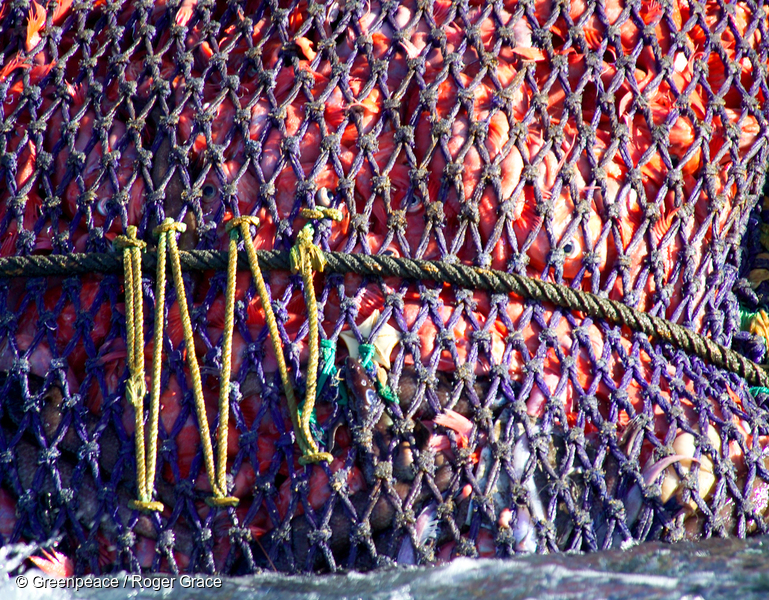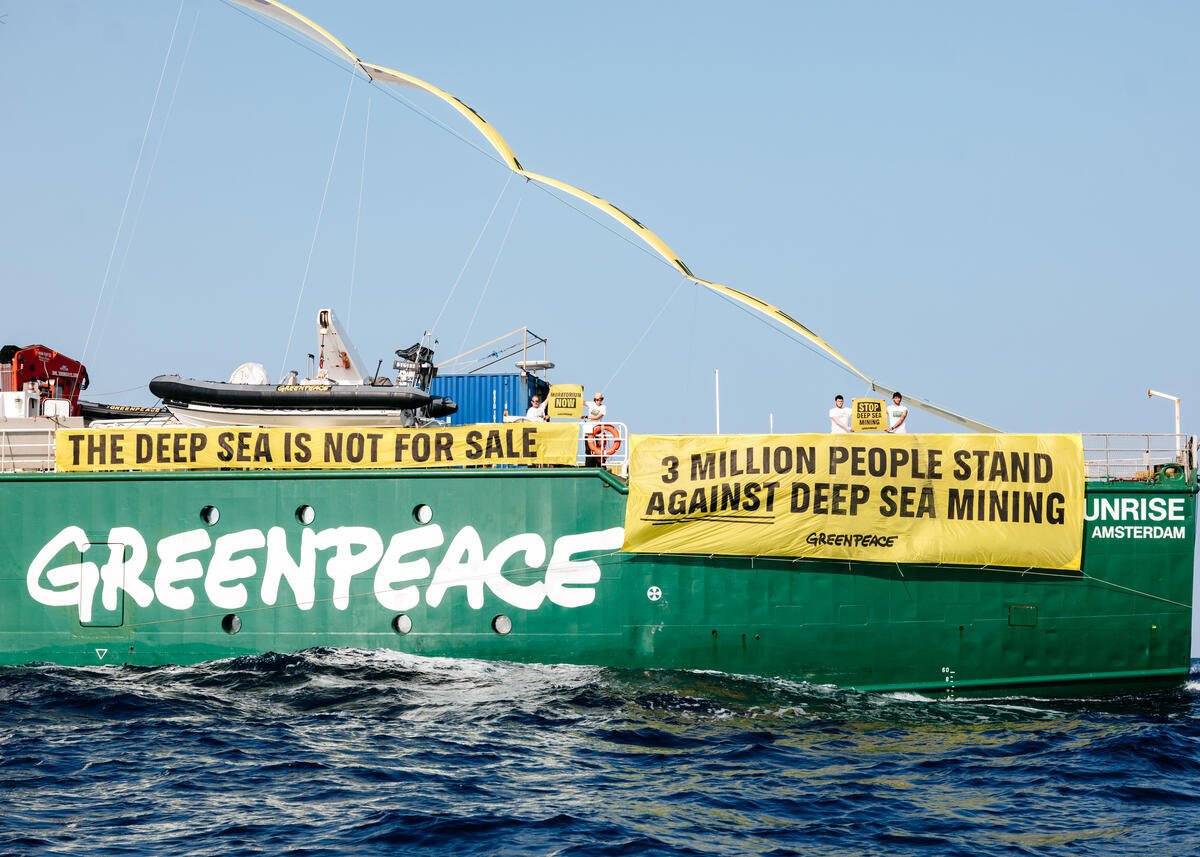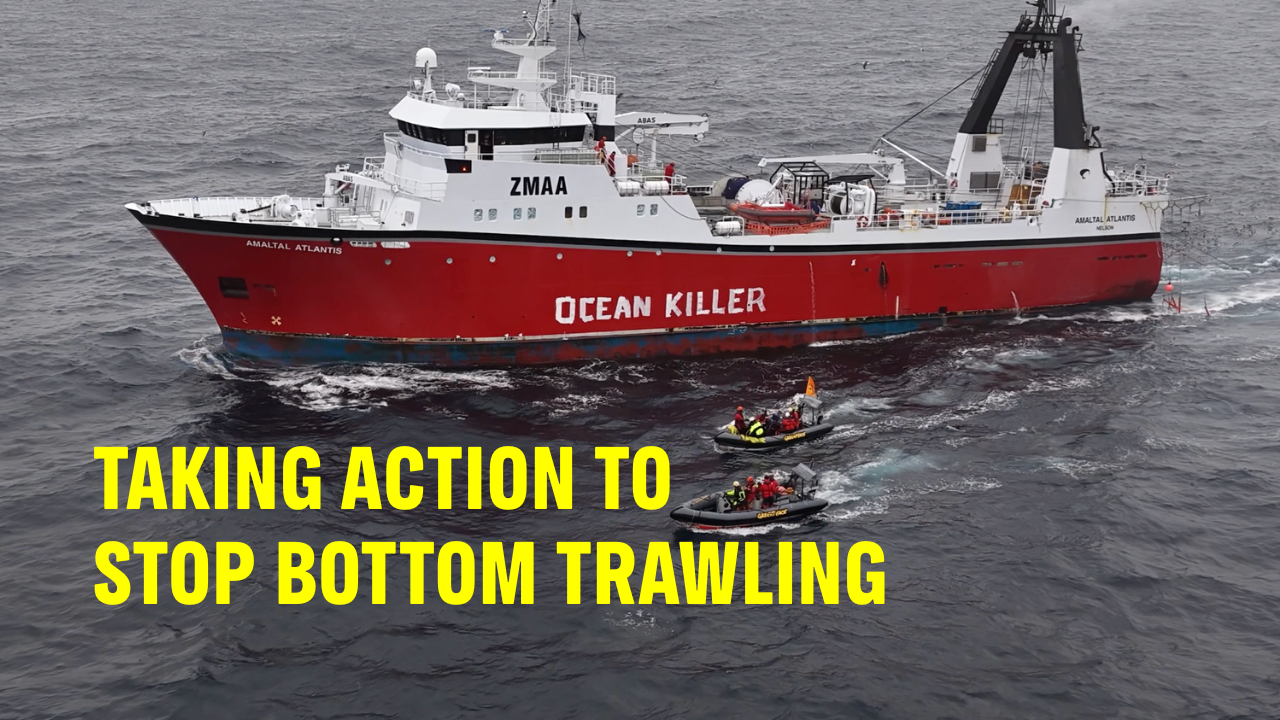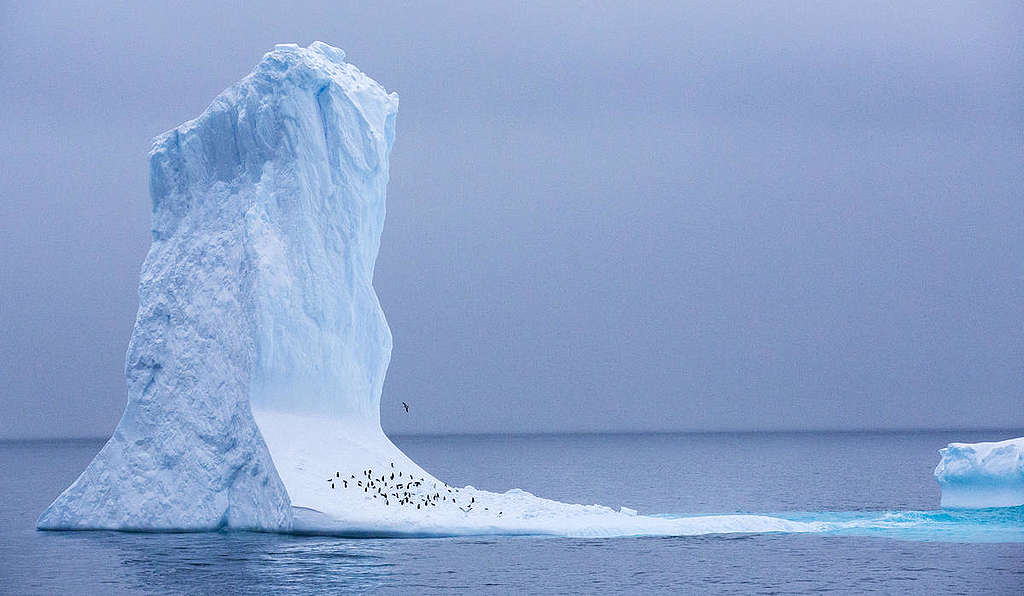
Penguins take shelter on an Iceberg, close to Trinity Island, in the Antarctic. Greenpeace is documenting the Antarctic’s unique wildlife, to strengthen the proposal to create the largest protected area on the planet, an Antarctic Ocean Sanctuary.
Over the last two weeks, a group of governments met in Hobart, Australia, to negotiate a new Antarctic Ocean Sanctuary.
They failed.
Although 22 governments supported the sanctuary, negotiators from Russia, China and Norway stopped it from going ahead. The Russian and Chinese delegations even used delaying tactics to waste time and hold up the negotiations, rather than engaging with the scientific evidence for the sanctuary.
This failure leaves the incredible wildlife of the Antarctic exposed to pressures from overfishing, pollution and climate change.
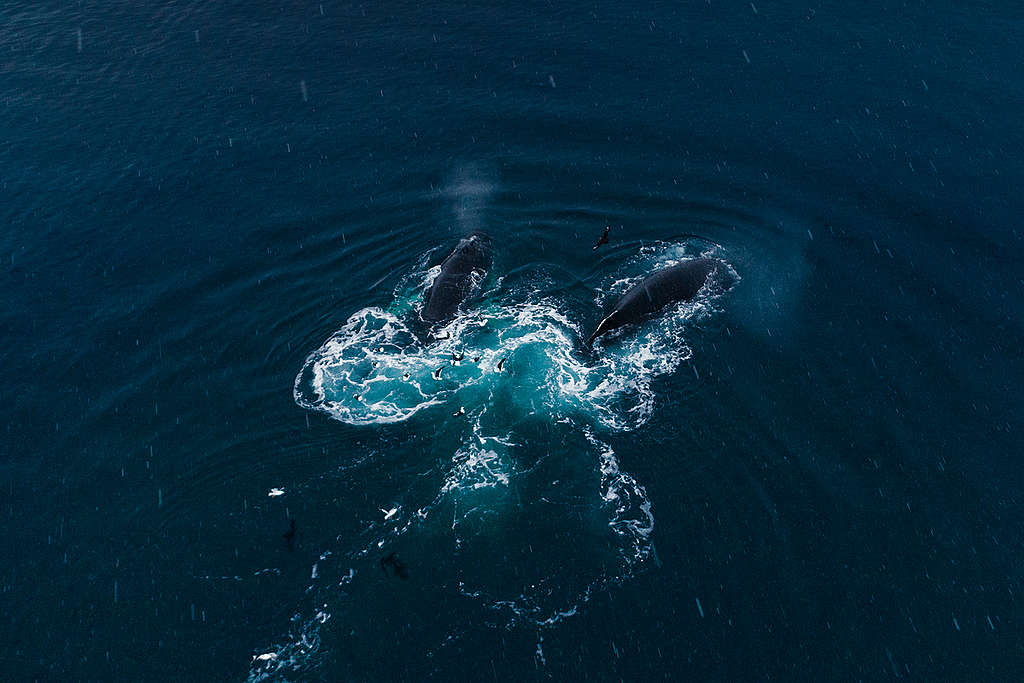
Humpback whales feeding for krill in Paradise Bay, in Palmer Archipelago, Antarctic Peninsula. Greenpeace is conducting submarine-based research of the seafloor to identify Vulnerable Marine Ecosystems, which will strengthen the case for the largest protected area on the planet, an Antarctic Ocean Sanctuary.
A broken system
There’s a specific international body that makes decisions about the waters around Antarctica: the Antarctic Ocean Commission. The Commission, officially known as CCAMLR, is made up of 24 countries plus the European Union.
It’s their job to look after Antarctic marine life and make sure the continent’s seas (which no single country controls) don’t become a free-for-all of overfishing. But because every country has to agree before a new sanctuary can go ahead, it’s easy for a small minority to stop things from progressing.
The Antarctic Ocean Commission failed this time, and if they keep failing, it’ll be increasingly clear that they’re unfit for purpose and aren’t part of the solution.
New hope for the oceans
Today is a sad day for everyone who cares about our blue planet. But this isn’t the end. In fact, it’s just the beginning — 2.7 million people joined the campaign for this ocean sanctuary and we’re going to come back stronger than ever.
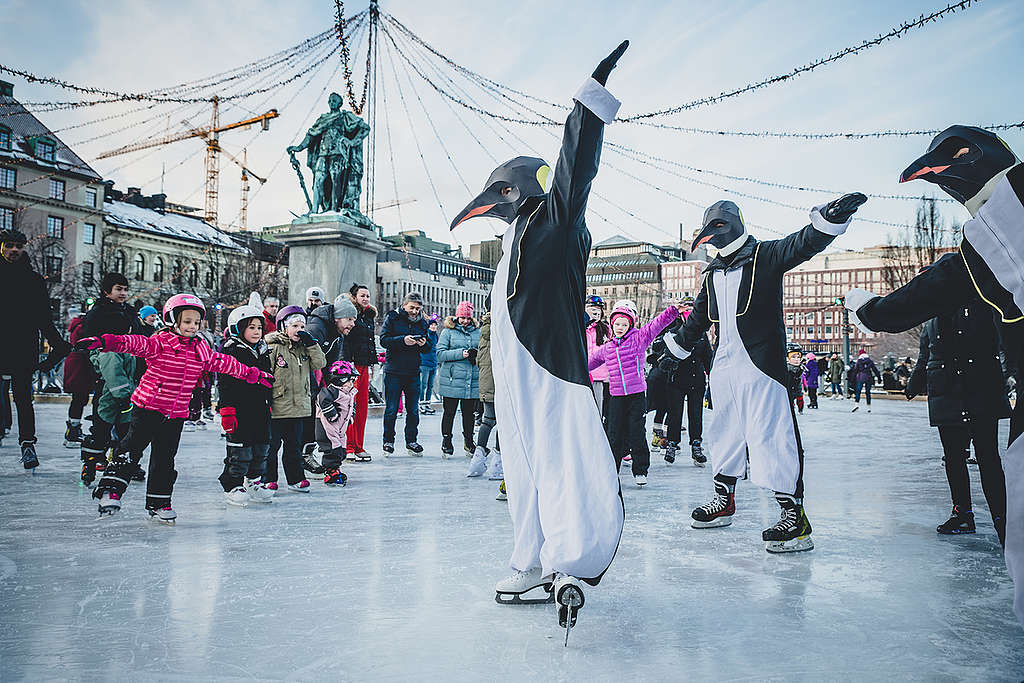
Penguins pictured performing a choreographed dance in Stockholm.
Groups of penguins have been popping up in iconic locations around the world, as part of Greenpeace campaign for the establishment of an Antarctic Ocean Sanctuary.
The sanctuary would be a safe haven for penguins, whales and seals, putting the waters off-limits to the industrial fishing vessels sucking up the tiny shrimp-like krill which Antarctic life relies on. The benefits of an Antarctic Ocean Sanctuary would be global. Healthy oceans sustain precious wildlife, help limit climate change and provide food security for billions of people.
First, we’ll keep working to protect the Antarctic Ocean. But that alone isn’t enough.
To truly start healing our blue planet, we need to think bigger. That means changing how the system works so it’s easier to protect large areas of our global oceans.
Soon, we’ll have a chance to do exactly that. There’s a new global ocean treaty on the table at the UN. If it’s approved, it’ll open the door to creating huge new protected areas covering at least one-third of the world’s oceans. Let’s not forget that 22 of the 25 countries at the Antarctic negotiations supported the creation of our sanctuary. In almost any other political forum, that would have been enough to make it a reality.
This could be a game-changer for ocean protection, and together, we can make it happen.
Malachi Chadwick is a digital campaigner for Greenpeace UK.

